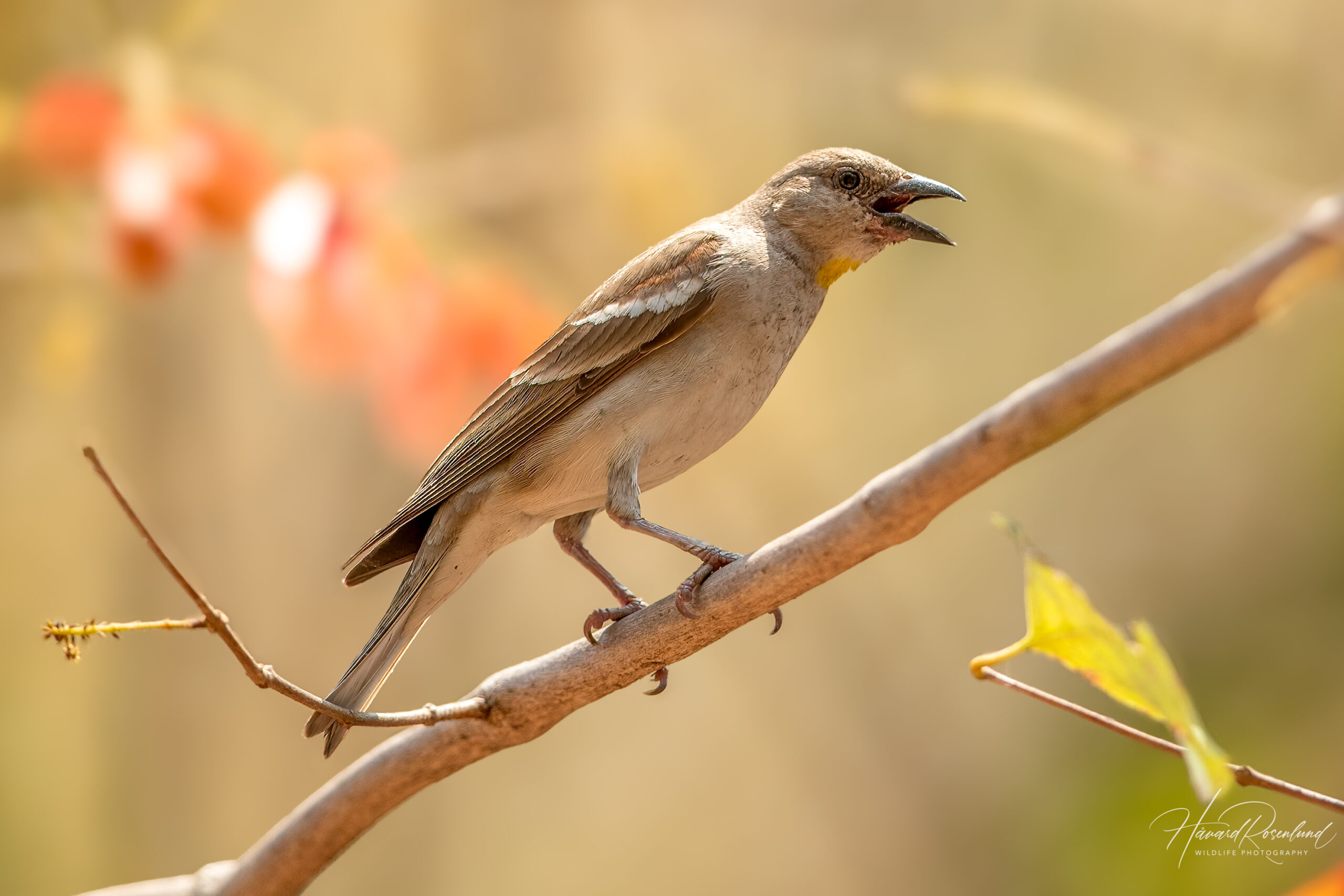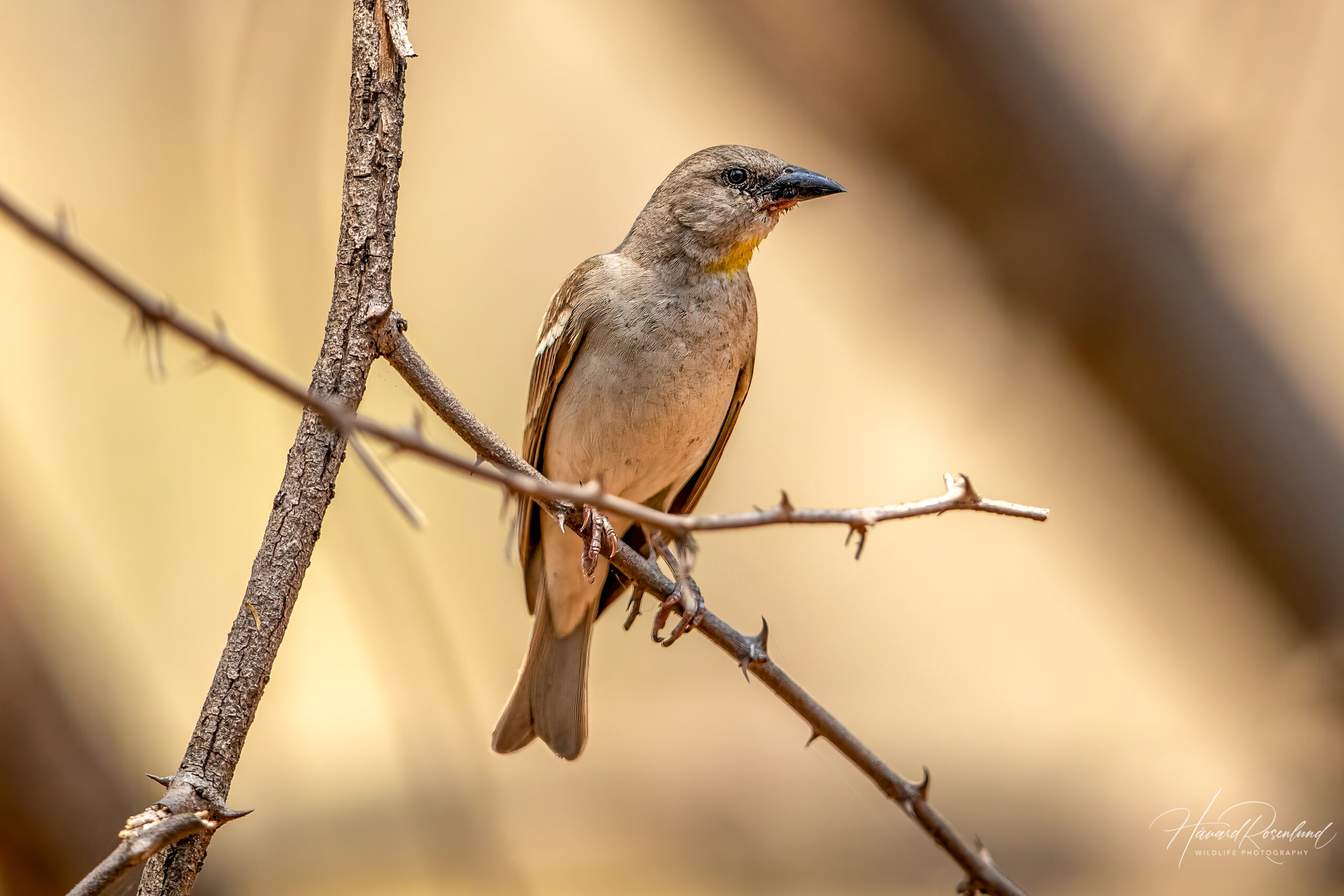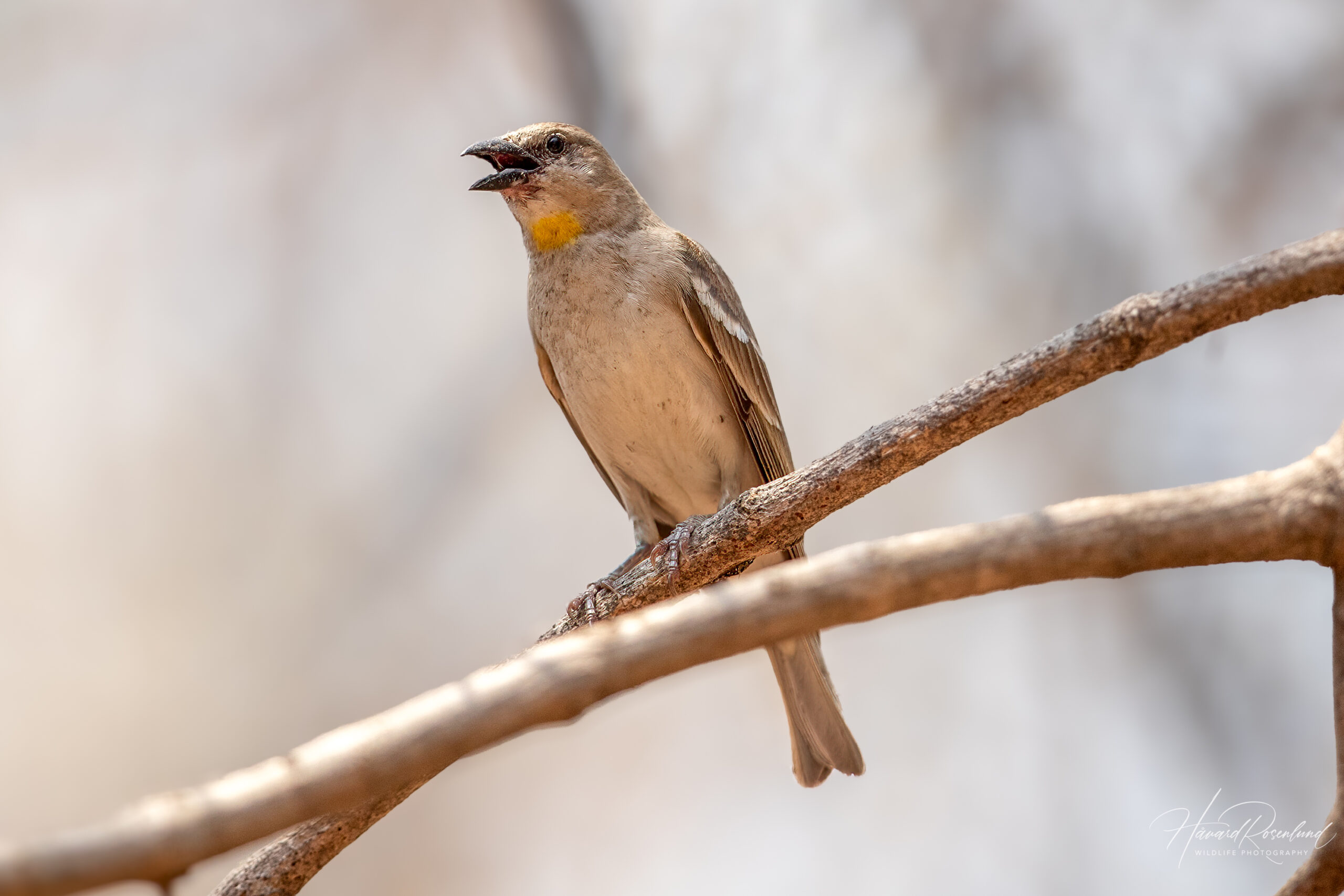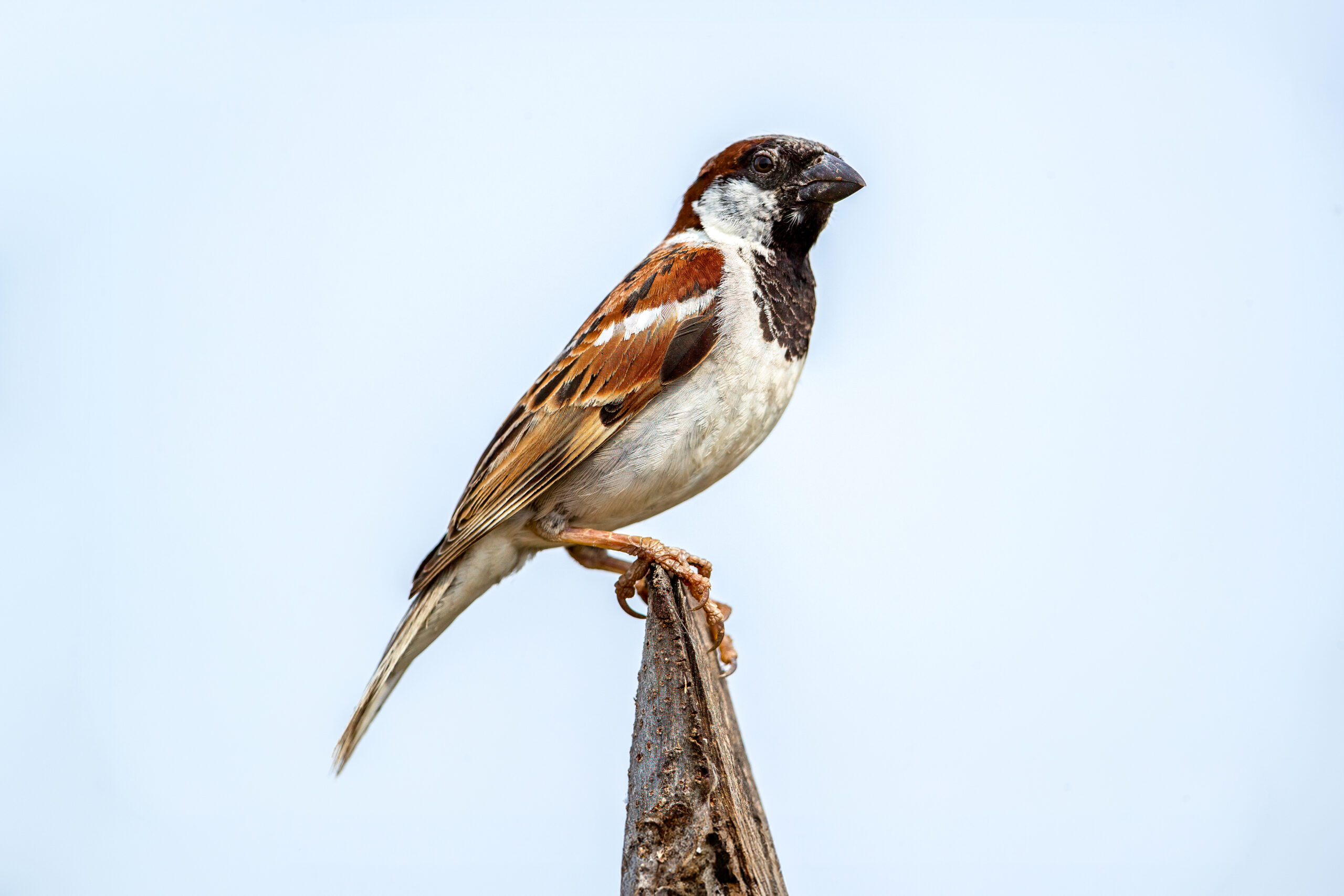Yellow-throated Sparrow
(Gymnoris xanthocollis)
Description
The yellow-throated sparrow (Gymnoris xanthocollis), also known as the chestnut-shouldered petronia (particularly in India), is a small passerine bird native to the Indian subcontinent and Western Asia. It typically measures between 12.5 to 14 cm (4.9-5.5 in) in length and features a distinctive yellow throat patch which contrasts with its grey head and brown streaked body. It has a chestnut patch on its shoulder, as is suggested by its alternative name. The bird is further characterized by its pale belly and a dark, conical beak suited to its diet. It is the only species of bush sparrow (birds in the genus Gymnoris) found outside of Africa.
Diet & habitat
The yellow-throated sparrow is predominantly found in dry, open woodland areas, scrublands, and cultivated regions where it can nest in trees and shrubs. It adapts well to urban environments as long as adequate greenery is present. This bird feeds mainly on seeds, grains, and insects, which it typically forages from the ground. During breeding season, its diet is supplemented with insects to provide higher protein content for chick development.
Nesting
Breeding season for the yellow-throated sparrow varies geographically, but generally occurs during the warm wet months when insect populations are high, facilitating chick nourishment. The species is monogamous, with pairs often remaining together for multiple breeding seasons. They build cup-shaped nests constructed from grass and lined with finer materials, usually positioned in the forks of tree branches. Eggs are typically pale blue or green with brown speckles, and clutches usually consist of 2-4 eggs. Incubation is carried out by both parents for about 12-14 days. Fledglings leave the nest approximately 18-20 days after hatching but remain dependent on their parents for several more weeks.
Status
The yellow-throated sparrow is currently classified as least concern on the IUCN Red List, with a stable population across its extensive range. No major threats are impacting this species on a large scale, though localized habitat destruction and the use of pesticides can affect certain populations.








